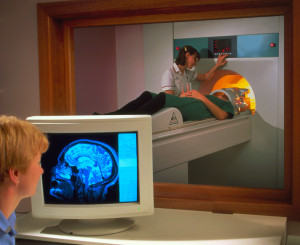Post-processing deblurring for medical imaging

A post-processing method for reducing the effects of blurring in MRI images has been developed. The software can be used to correct data that has been acquired using a 3D-MRI readout to reduce the blurring seen in the images after acquisition. This software should aid in the clinical interpretation of 3D-MRI data.
Correcting image blurring after acquisition
Blurring is often seen in a particular direction in images from certain 3D readouts. Solutions typically require the ‘segmentation’ of the readout, which increases the overall image acquisition time substantially. Oxford scientists have developed methods to provide correction to the data after acquisition – it can thus be applied retrospectively where blurring has already occurred and prospectively where segmentation is not desirable, or only partial segmentation is possible.
The method attempts to use the noise on the data to estimate the degree of blurring and derive a kernel that can be used to undo the blurring process. The developed method is specifically for application to MRI data taking into account the special nature of the MRI acquisition process.
Further Applications
To date, the method developed has been applied to Arterial Spin Labelling (ASL) perfusion MRI, however in principle the method might be applicable to a wide range of MRI methods that rely upon ‘3D’ readout.
Development status and commercialisation
Code which has been tested on existing human data is available to apply the deblurring techniques to 3D-images. Oxford University Innovation seeks parties interested in licensing this software.
about this technology

